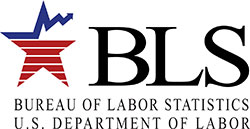The state of New York is found in the northeastern part of this country. It was one of the original 13 colonies that formed the country. It is the 4th most populous, with some 19.8 million people living there as of 2015. Around 40% of the population lives in New York City, 40% of which live in Long Island. In 2015, some 8.55 million people lived in New York City, making it the most populous in the country. It is also the main entry point for legal immigration into the country.
The geography of the state is diverse. It borders Vermont, Massachusetts, Connecticut, Pennsylvania, and New Jersey, as well as being on the Atlantic Coast. Rhode Island, meanwhile, borders Canada. In terms of geology, New York is home to many different waterways, including the Hudson River and the Mohawk River. It also homes the Appalachian Mountains and various other mountain ranges.
Public Health Problems in New York State
Health problems that the New York State Department of Health is paying attention to in particular include:
- Breast cancer
- Synthetic marijuana
- AIDS and sexually transmitted diseases
- Injection safety
- Smoking
The five leading causes of death in 2014 were:
- Heart disease
- Cancer
- Chronic lower respiratory diseases
- Stroke
- Unintentional injuries
Unique Pressures on the Public Health System in New York State
There is an uneven population distribution in the state of New York, with the vast majority of people living in New York City and Saratoga County. No other US city has seen as much population growth as the city of New York. Western New York, on the other hand, has a near stagnant population growth.
A significant element of population growth comes from immigration. This is true for both international and national immigration, with Floridians in particular coming to the state. In 2008, the state was home to around 4.2 million international immigrants, attracted by its cosmopolitan culture, vibrant economy, high profile, and size.
Non-Hispanic whites are the largest population group in the state, although their percentage is declining. In fact, in 2011, 55.6% of those under the age of 1 were classed as minorities. The state is also home to a large Jewish population, the highest, in fact, outside of Israel. Orthodox Jewish families have a particularly high reproduction rate, which is seen in the Hudson Valley and in Brooklyn in particular.
Additionally, there is a large African American population, with only Georgia having a larger percentage, and Asian-American population, with only California having a larger population. Both of these population groups are increasing. It is for this reason that New York is one of the most ethnically diverse states in the country, and New York City is the most ethnically diverse in the world.
The Hispanic and Latino community is also increasing. Queens, in particular, is home to the largest Andean population group in the country. The state is also home to Jamaican, Dominican, and Puerto Rican population groups.
The fastest growing population group in New York, however, comes from China. They are thriving significantly, while expanding outside of Manhattan, Flushing, and Brooklyn into Nassau County. Meanwhile, Sullivan County is planning a new China City of America.
Last but not least, the Italian American population is the largest in the country, followed by Irish Americans. Other population groups that arose from the original immigrants into the country include German Americans and French Canadians.
Each of these population groups presents unique public health challenges. One issue that is less problematic in New York, however, is that of the aging population. While it is home to many elderly people, birth rates continue to be strong as well.
Getting a Masters of Public Health in New York State
The U.S. News and World Report ranks the MPH degree program offered by Columbia University in New York City as 5th best in the country.
The Columbia MPH program is known for its innovative structure and can be completed in two years. Some students may even be allowed to complete the one year accelerated MPH program. It includes six different components, each of which is inextricably linked to the other. Every completed assignment and activity, therefore, has a link to each of the components. Students do have to choose a specific department and concentration. Concentrations offered by Columbia University include:
- Biostatistics
- Environmental Health Sciences
- Epidemiology
- Health Policy and Management
- Population and Family Health
- Sociomedical Sciences
Each of these concentrations has several areas of focus included in them, which students can choose through their electives.
New York has not signed up to the State Loan Repayment Program for public health students. This means that there is no opportunity to have student debt eliminated upon completion. New York is one of the few states that do not have a loan forgiveness program in place for public health students.
Working in Public Health in New York
The U.S. Bureau of Labor Statistics classifies most MPH degree holders as medical and health services managers. They have reported good conditions in New York, specifically that:
- There are 26,010 of these professionals employed in the state.
- Their average annual salary is $135,640, which is significantly above the national average for this profession of $96,540.
- The national expectation is a 17% growth in demand for the skills of medical and health services managers from 2014 to 2024.
Additional Resources
- UNE vs USC Online MPH Degree
- MSW vs MPH Degree Differences
- Online MPH Programs with No GRE
- Types of Masters in Public Health Degrees
- Best Online MPH Degree Programs
- Things To Do with a Public Health Degree
References
- Medical and Health Services Managers. (2017, Mar. 31). Retrieved from https://www.bls.gov/oes/current/oes119111.htm#st
- Columbia MPH. (n.d.). Retrieved from https://www.mailman.columbia.edu/become-student/degrees/masters-programs/masters-public-health/columbia-mph
- Public Health Works! (2017, Apr.). Retrieved from https://www.health.ny.gov/prevention/public_health_works/

















